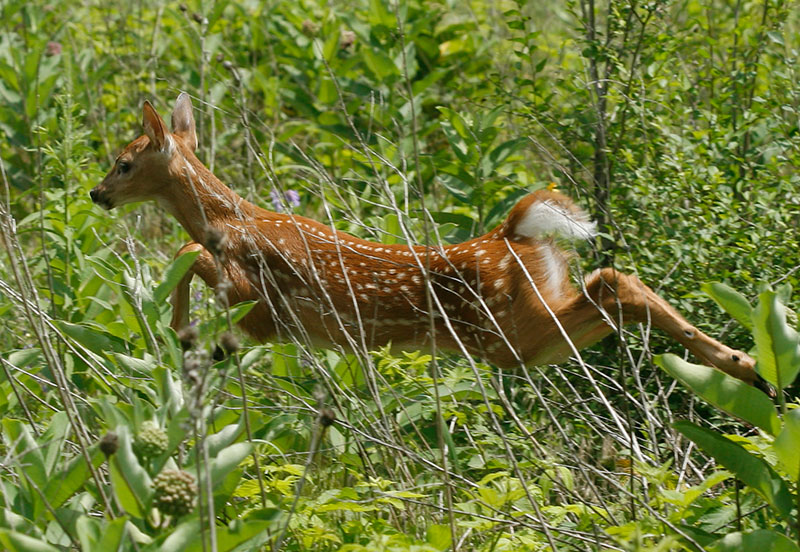
Photo by Michael R. Jeffords



Photo by Michael R. Jeffords
Sex ratio, the number of males to females, is important to the population growth and management of wildlife, including deer. Biologists often use sex ratios to help estimate deer population size and set harvest quotas. Many animals have a 1:1 sex ratio at birth, but for deer, changes in hormones can create an unbalanced fawn sex ratio. An unbalanced sex ratio can consequently influence the number of bucks and does in a population, potentially for decades.
Scientists have discovered two hormones, “follicle stimulating hormone” and “luteinizing hormone,” that stimulate fawn growth in the womb and are strongly influenced by the genetics and health of pregnant does. These hormones can also be influenced by factors including deer density, age, timing of conception, and length of daylight during conception. Due to differences in these factors across Illinois, fawn sex ratios can vary from area to area and year to year.
Deer density particularly has a substantial influence on fawn sex ratios. When deer become too numerous in an area they will develop stress due to increased competition for habitat. Stress has a major impact on pregnant does that typically show two strategies to lessen future competition for themselves. First, they tend to produce more male fawns because males typically disperse from their natal home range. Second, they may produce less, but larger, fawns to reduce future competition while increasing odds of fawns surviving, as larger fawns typically have better survival. When pregnant does are not stressed, they may produce more, often female, fawns because additional females do not present immediate competition. Female fawns also have greater potential than male fawns to sire more generations over their lifetime, which increases the probability their genetic lineage remains in the population.

Like a poker player strategizing what cards to play each hand, the hormones of pregnant does are used in a bet-hedging strategy that adjusts the number and sex ratio of fawns they have each year. For deer, reproducing more fawns with their genes in the population is like winning the poker jackpot. Keep in mind the predicted fawn sex ratio is at birth, not what you would necessarily see later in the year after factors like disease, predation and hunting have potentially skewed the ratio.
Using trail cameras and optics to count male and female adult and fawn deer, particularly mid- to late-summer, are great ways to track the sex ratio and abundance of a deer herd. You can also monitor vegetation-browsing pressure to see how deer abundance is influencing the sex ratio and habitat. Several useful resources exist on the internet to help you establish a deer and habitat monitoring procedure. Keep in mind deer are highly mobile and monitoring an individual herd takes a broad scale approach, encompassing hundreds of acres. Developing a monitoring strategy with your neighbors can be a great way to improve your understanding of the local deer herd and habitat.
Submit a question for the author